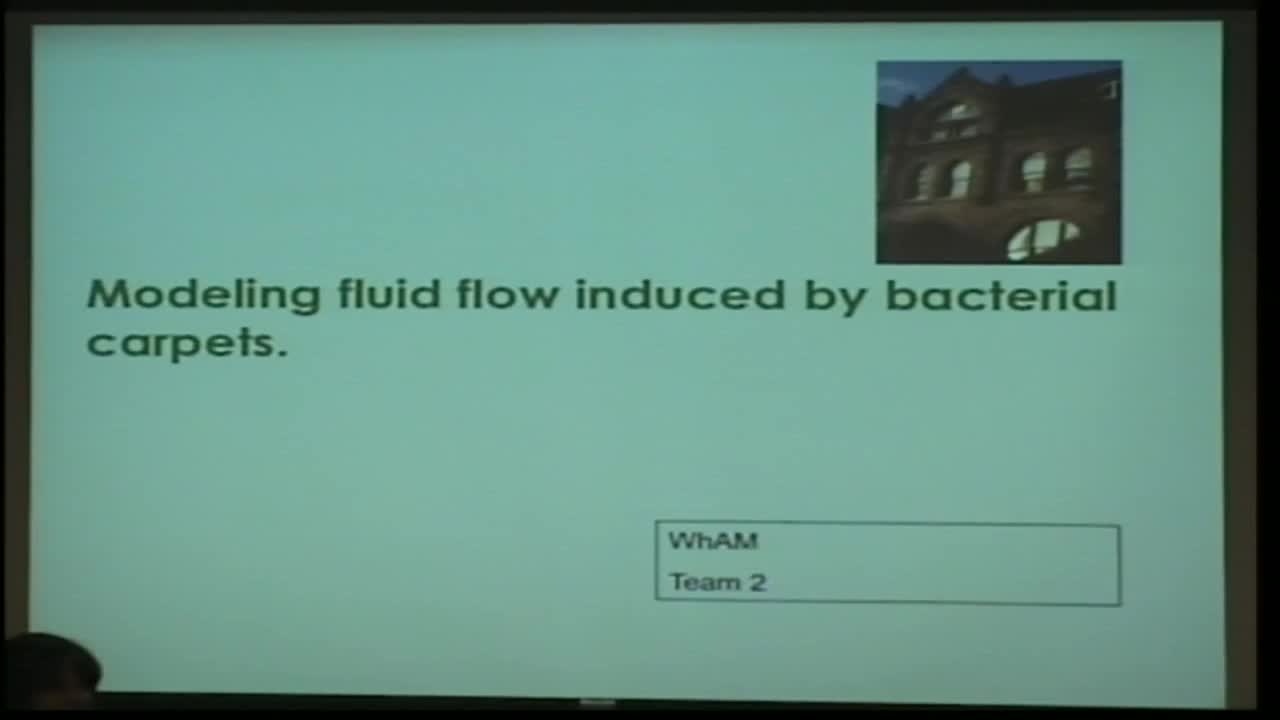Modeling Fluid Flow Induced by Bacterial Carpets
Presenters
September 9, 2013
Abstract
Recent developments in microfluidic devices have enabled controlled studies and manipulation of fluid flows with length scales at the micron level [6]. At this length scale, viscous forces are very important and processes such as diffusion and surface tension dominate. In many microfluidic experiments that measure chemical and biological processes, mixing of the fluid within the chamber is desirable. Turbulent mixing and pumping do not work in this microscale world where inertia is negligible. For example, two laminar streams flowing in contact with each other will not mix except by diffusion. Strategies for generating mixing at the microscale are therefore an important component of experiment design. A novel approach to microfluidic mixing introduced by N. Darnton et al [3] is the use of flagellated bacteria as fluidic actuators. In this approach, large numbers of bacteria are made to adhere to a substrate. The adherent bacteria on this “bacterial carpet” freely rotate their flagella, which move the fluid near them and act as microscopic propellers. Furthermore,
they can live on small amounts of simple nutrients (e.g., sugars) and can even maintain mobility for several hours without food [4]. Since no external power source is needed, the use of bacteria can be advantageous over conventional micro- or nano-fabricated devices.
The objective of this project is to study the flow induced by the collective flagellar motion of bacterial carpets. In particular, we will model a doubly-periodic array of rotating helical flagella stuck to a surface immersed in a viscous, incompressible fluid. We will examine the transport of fluid particles above the carpet as a function of flagellar distribution and geometries. In addition, since many applications in microfluidics involve suspended macromolecules and biopolymers, we will examine the transport of particles of non-zero volume as well as fibers. Our mathematical model and computational framework will be based upon the method of regularized Stokeslets [1, 2], which
was designed to study the coupling of elastic structures with fluid at zero Reynolds number, and a more recent extension of this method to incorporate periodicity [5].
References
[1] R Cortez. The method of regularized stokeslets. SIAM J. Sci. Comput., 23:1204, 2001.
[2] R Cortez, L Fauci, and A Medovikov. The method of regularized stokeslets in three dimensions:
analysis, validation, and application to helical swimming. Phys. Fluids, 17:031504, 2005.
[3] N Darnton, L Turner, K Breuer, and HC Berg. Moving fluid with bacterial carpets. Biophys.
J., 86:1863–1870, 2004.
[4] M Kim and K Breuer. Use of bacterial carpets to enhance mixing in microfluidic systems. J.
Fluids Engr., 129:319, 2007.
[5] K Leiderman, EL Bouzarth, R Cortez, and AT Layton. A regularization method for the nu-
merical solution of periodic stokes flow. J. Comput. Phys., 236:187–202, 2013.
[6] HA Stone, AD Stroock, and A Ajdari. Engineering flows in small devices: Microfluidics toward
a lab-on-a-chip. Annu. Rev. Fluid Mech., 36:381–411, 2004.
